After I´ve approached this topic in Part 1 with exploring a pretty standard solar power installation on a 40-footer (read my article here) I am happy that one of our clients, Dirk L. who is currently sailing a 2018 built Oceanis 51.1 went a notch up with his solar power installation and offered an exclusive insight to how he was approaching the situation.
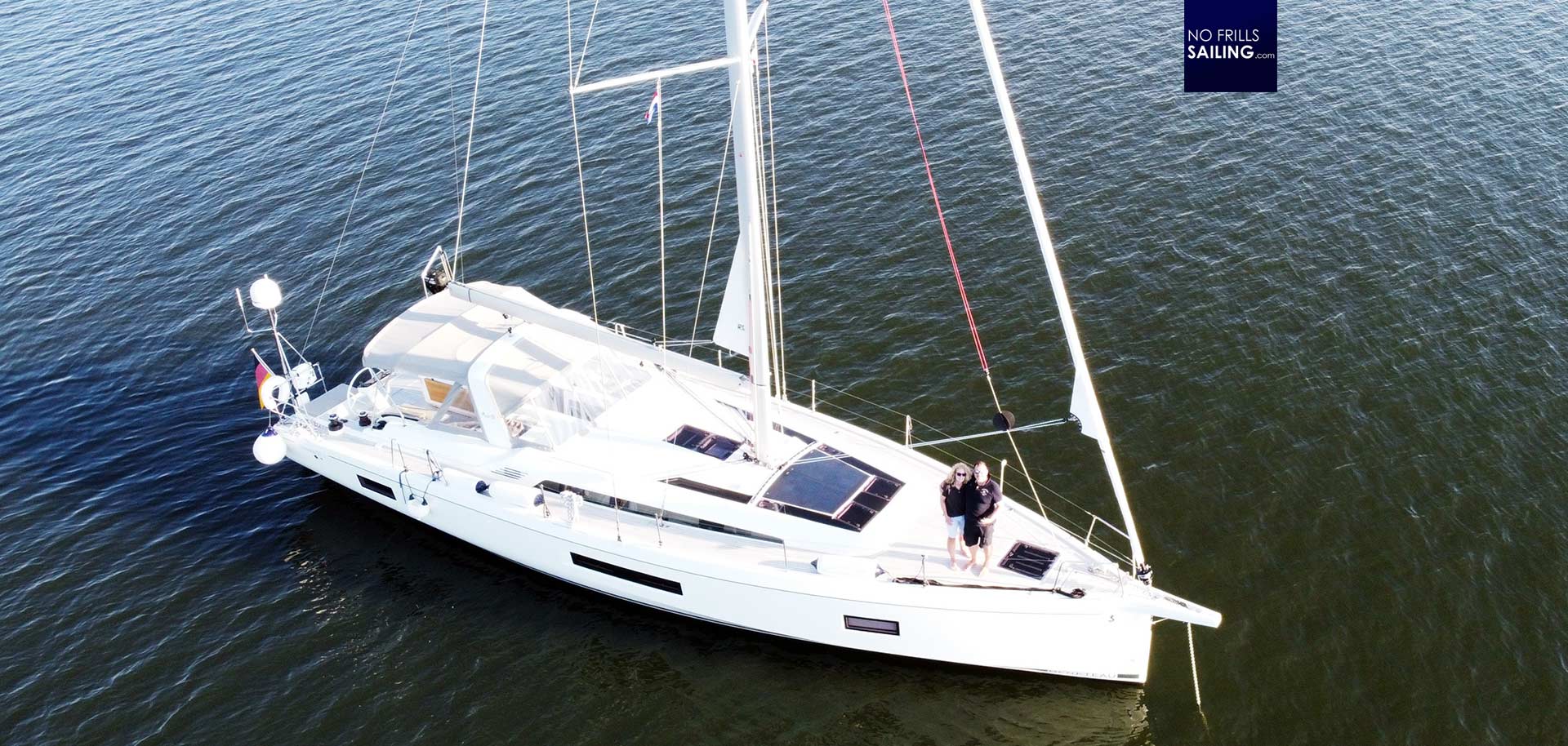
Dirk is an executive to a Japanese tech-firm and thus both very receptive to new technologies and solutions, technic-wise well educated and blessed with craftsmanship to perform both the planning and the realization of such a venture. I am happy that he shared his experience on installing a solar power array on his boat and here is what we´ve been talking about.
The solar array set-up
Lars Reisberg | NO FRILLS SAILING.com: “Dirk, thanks for taking your time to talk to me and sharing this exciting information with us. Let´s start it this way: Why have you chose to add a secondary power source to your boat in the first place?”
Dirk L. | Oceanis 51. “JUST US”: “Well, for me this is the first real step towards saving energy. My aim is to get closer to being self-sufficient on our yacht when it comes to electricity. In order to achieve this state on a big boat like ours you definitely need large power generating units or you just switch to alternatives. That may be a wind turbine or a hydrogenator. In addition I´ve thought of a second alternator to spare a Diesel-powered generator.”
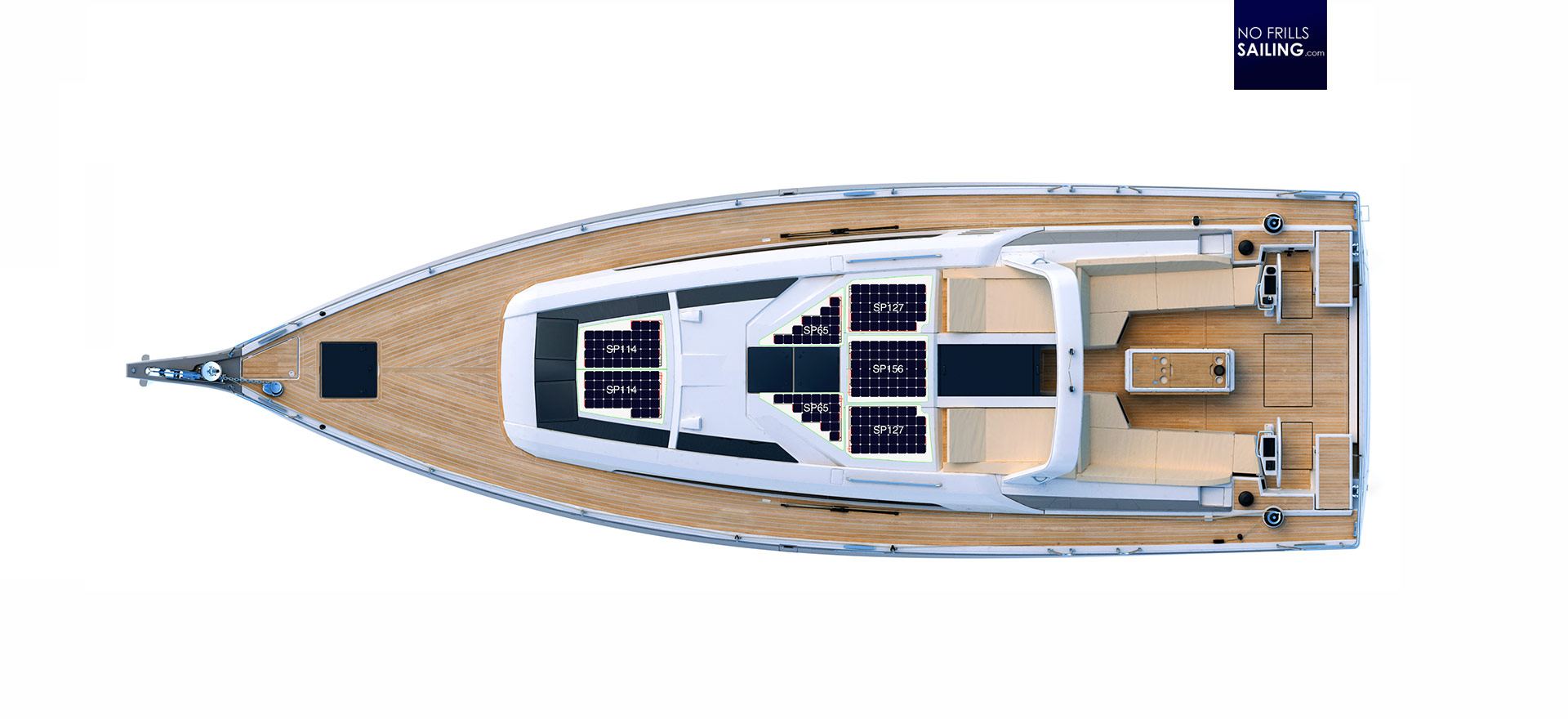
NO FRILLS SAILING.com: “But you decided to stock your boat with photovoltaics. Which role does your array play next to the primary source, the main Diesel engine?”
Dirk L. : “Basically I came up with a setup that would be capable to buffer the batteries. Meaning that it is calculated to constantly replenish energy taken out from the service batteries by our various current consumers. Which by the way we have plenty of on board: Four fridges, three navigation plotters, an auto pilot and some other consumers which are part of the comfort-package installed in our yacht.
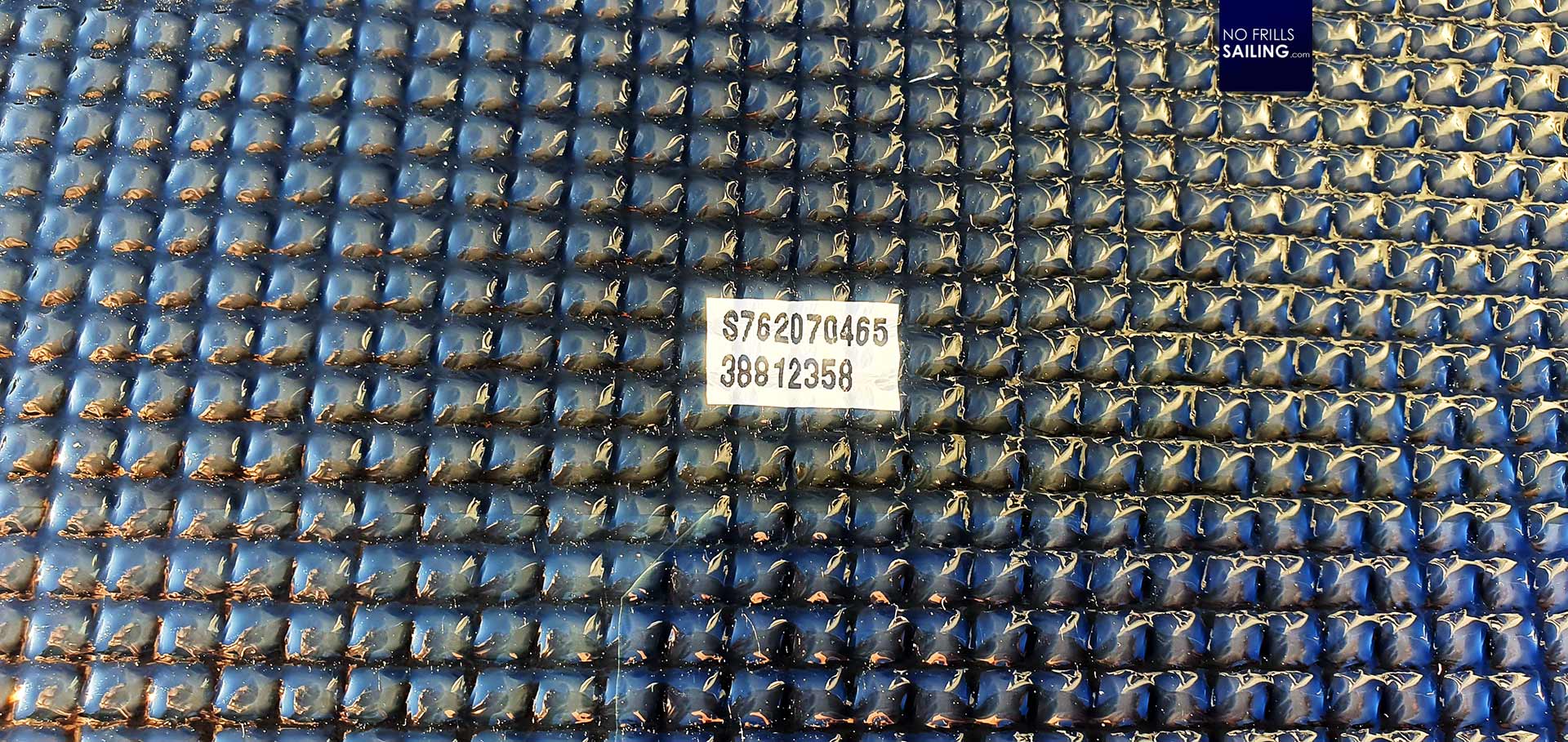
NO FRILLS SAILING.com: “Tell me more about the technical facts of the solar array installed aboard your boat.”
Dirk L. : “It´s a work in progress I have to tell you first. Right now we have installed and brought on-line the first two panels. When the boat is fully stocked, we will have a total of seven solar panels with a 768 Watt-peak power output, which is pretty amazing. The first two panels online now deliver 117 Watt-peak each. They are fascinating pieces of engineering: Monocrystalline SunPower silicon cells on the coach roof of the boat fitted with a black anti-skid lining. All connectors are on the underside”
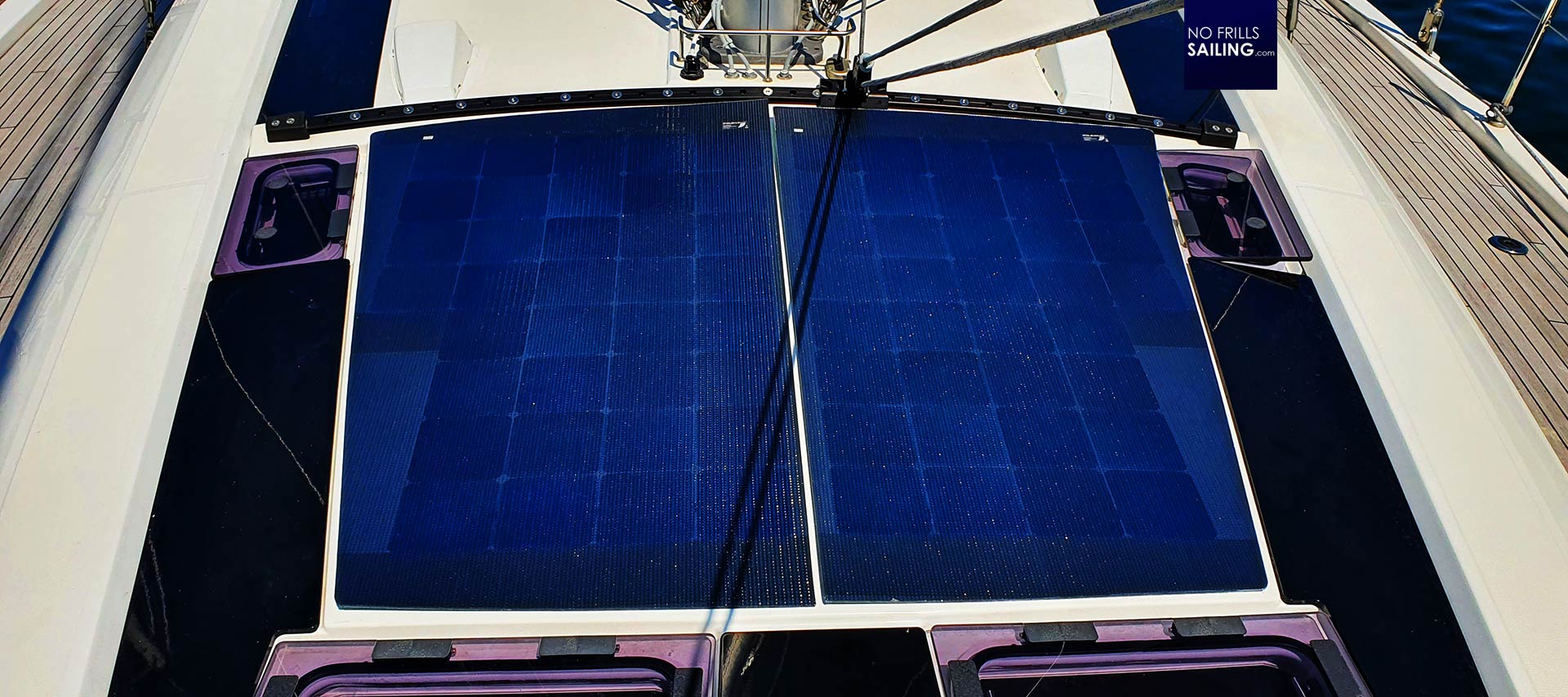
NO FRILLS SAILING.com: “This seems like a custom-made solution. Which company did you work with to realize your ideas and how was the process of bringing your idea to life?”
Dirk L. : “I took quite some time to educate myself in this field. After some research and meeting with various people I decided to start collaborating with a company called Solbian. That´s because these people offered made-to-measure solar panels for yacht decks and having them manufactured in a way that I can still walk on the deck, which I find fascinating. I also thought of installing an aft-rack but I couldn´t find solution which would satisfy both the factual and aesthetical requirements of such a venture. It was then during BOOT boat show in Duesseldorf early this year when I first talked with the company about the project. After closing time of the show employees of Solbian went over to the Beneteau booth and took measurements of the Oceanis 51.1´s deck. Sending cardboard-models of the panels to check for accuracy of fit I was able to correct a small measurement error: Making the panels 8 millimeters wider increased the power output from 114 to 117 Watt-peak per panel. After confirmation of the model gauges they produced the first panels which arrived a few weeks later for installation.”

NO FRILLS SAILING.com: “Tell me more please about the installation, where are the charge controllers, monitoring panels et cetera?”
Dirk L. : “I took care of the installation by myself and I found it quite easy to be honest: The solar panels are glued in place on the deck. Before that I had to drill two boreholes all through the roof to put in – and seal thoroughly – the cables. The solar panels are coated with a high-tech 3M adhesive layer which will stick almost non-removable to the deck. Also, the burling anti-skid structure of the cover on top of the panels is bomb-proof and safely glued. The panels do come with a on efoot long cable which I have gathered under the roofing panels of the owner´s cabin and connected to the stowage under the settee which is on the other side of the saloon-bulkhead. These run directly into Victron Smart Solar MPPT current transformers. From these I fitted two separate Oilflex solar cables to the service batteries of the yacht.”
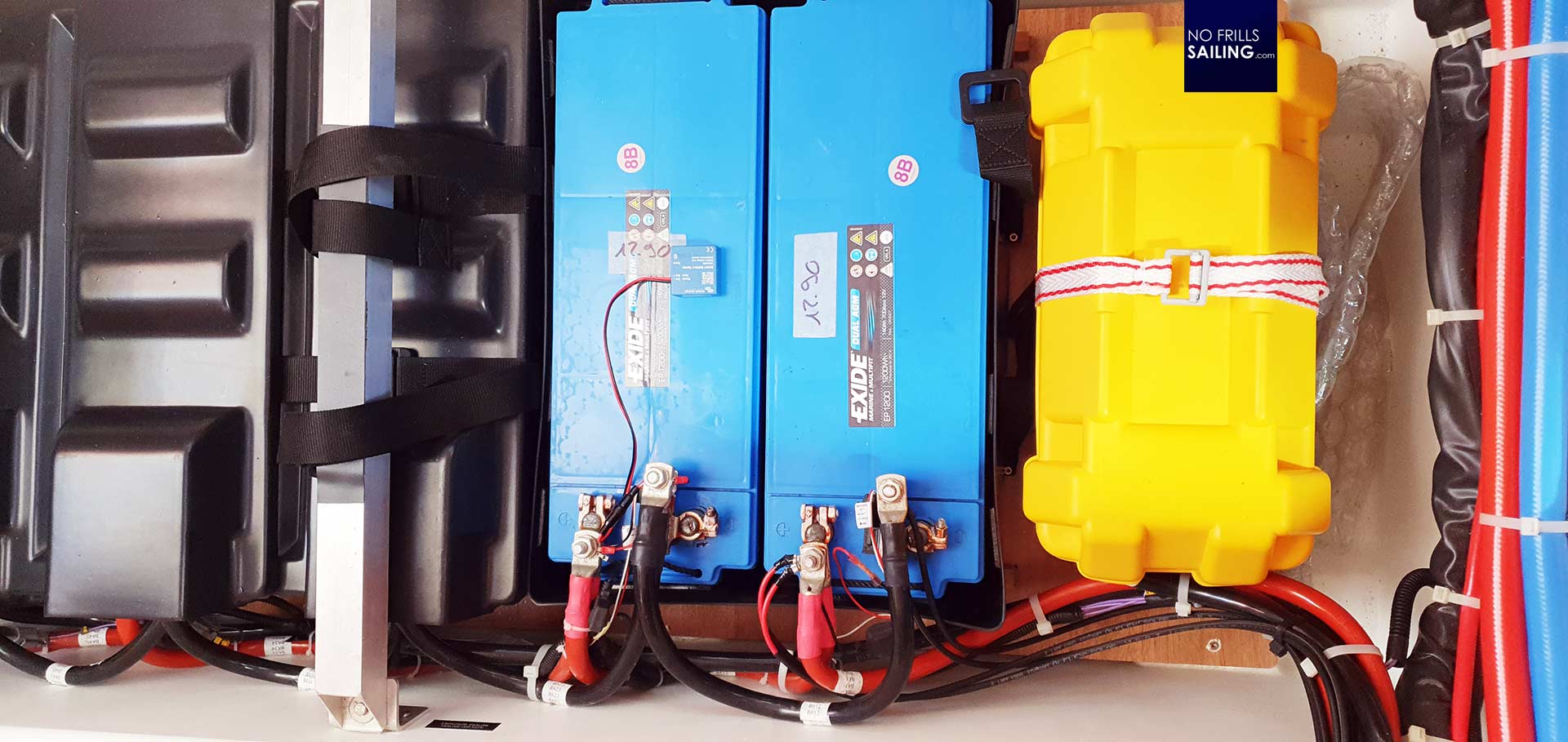
NO FRILLS SAILING.com : “What about the battery setup of the yacht?”
Dirk L. : “This remained unchanged. I added a unit called Victron Energy Smart Battery Sense which communicates wireless with the Smart Solar MMPTs via Bluetooth. As a matter of fact, this system ensures a very accurate measurement of the current as it gauges directly on the connections of the circuit at the batteries not at the panels which minimizes errors in measurements due to current losses of the cable resistance. In this I will always get the right amount of current going into the batteries created by the panels. Monitoring of the system is made sure via app which is installed on my mobile phone and the tablet used on board – I am planning to complete this system by installing a Victron Energy Cerbo GX-module shortly which will allow me to have remote access – for example from home – to all data connected to the solar panel installation, status of the batteries and many more features.”
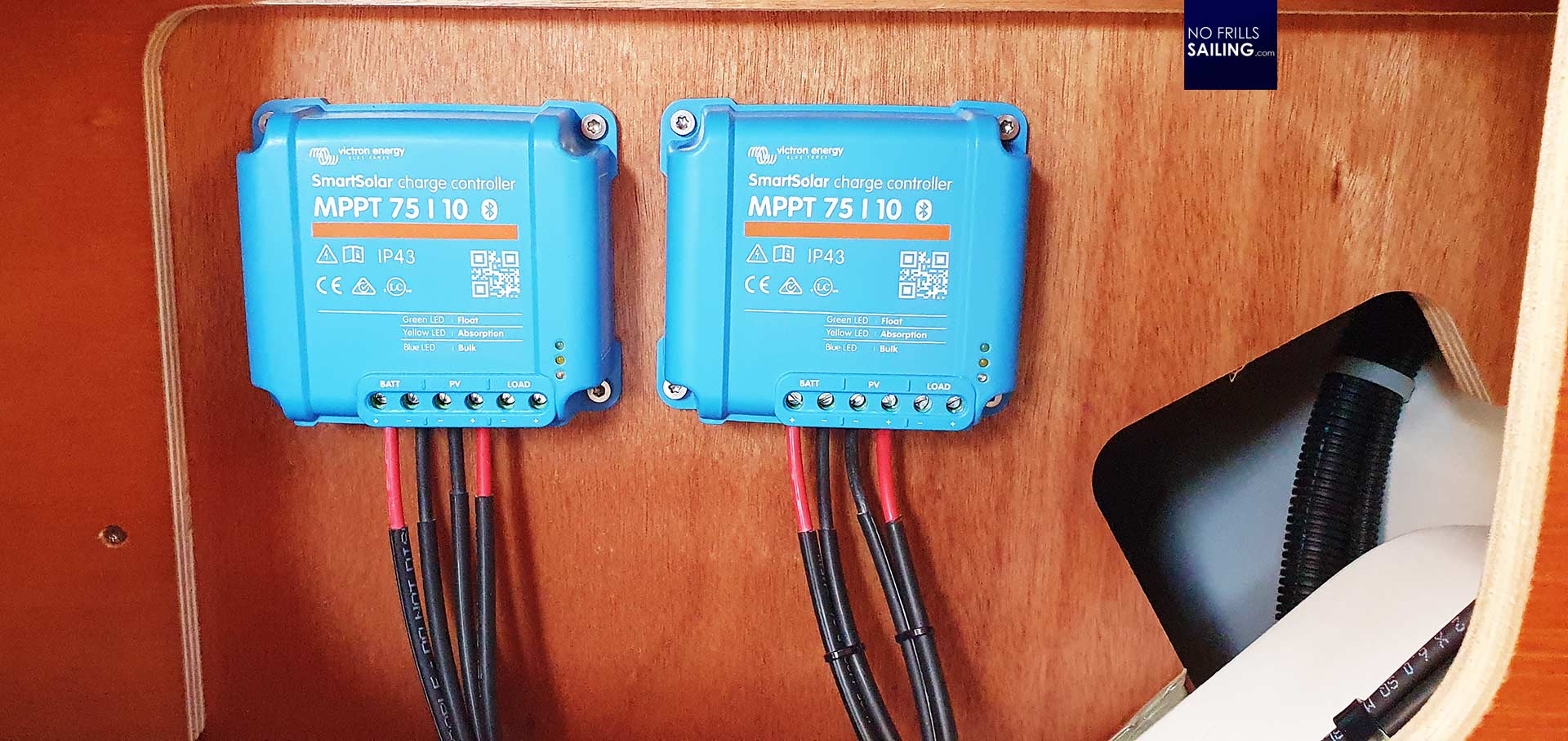
NO FRILLS SAILING.com: “So it´s all digital – Solar 2.0 in my own words. Fascinating! But tell me, why did you opt against an aft mounted solar rack and went for panels on deck instead?”
Dirk L. : “To be honest: I do not like the aesthetics of these racks very much. Of course on most of the long haul-optimized yachts you are going to find these and they are obviously very useful but I think there are better solutions. For antennae and other installations I have a custom fit aft mast on the stern of my yacht. Thinking through this project I in fact got a quote for a nicely manufactures custom fit aft rack but it was worth more than 10.000 Euros for the rack alone. As we were at the same time contemplating of maybe fitting the coach roof with Teak which came with a price tag of 6.000 to 10.000 Euros we thought that the decision to skip an aft rack and Teak and fit solar power instead was the best solution. By the way, Solbian is working on solar panels which look like Teak and can be used as deck cover: Imagine this!”
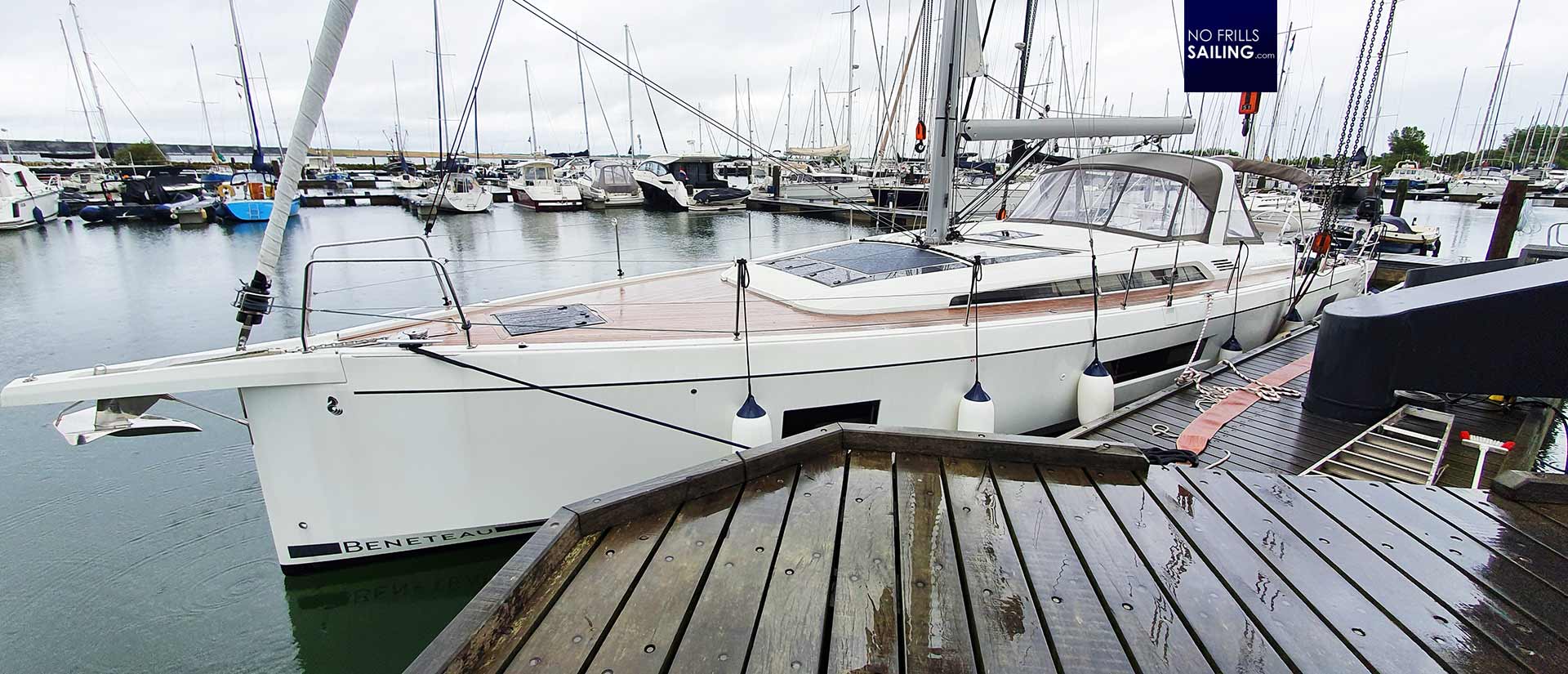
NO FRILLS SAILING.com : “Now that you are running the system what are your first impressions and thought based on your daily experience with your solar power setup?”
Dirk L. : “Very good! Although the boat is moored in the Netherlands near the North Sea with according weather conditions I can state that even with just those two modules installed the power output is enormous. We do get approximately 170 Ah per panel. Of course, you notice a difference if the yacht is connected to shore power or not. If I disconnect the boat from shore power and I do not have any current consumers on the grid the panels deliver a load of energy more than having them in bulk mode. Replenishing the batteries works fine just as planned. But I know it´s not enough to be self sufficient underway with everything switched on and that’s why we will upgrade the system to the previously mentioned nearly 800 Watt peak maximum output.”
Dirk, thanks so much for this interesting insight into your #boatenergy project. In our next article on this series we will take a look at off-the-shelf solutions for small boats.
You may also find interesting to read:
All cruise reports
